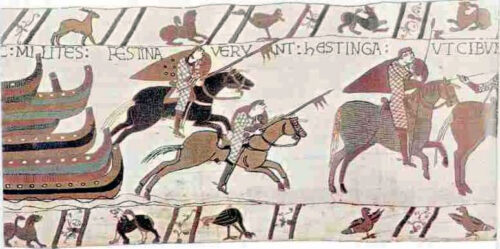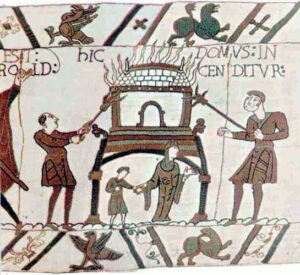
Bexhill’s location on the south coast has always made it vulnerable to the threat of invasion. It is recorded that in 771 King Offa of Mercia defeated the men of Hastings at Pevensey. It is thought that at that time the word ‘Hastings’ described a much wider area than it does today. King Offa granted a charter to establish a church in Bexhill and endowed it with land, this being the first documentary reference to Bexhill. Between 792-1011 Vikings raided the Sussex coast, although it is not known how this affected Bexhill.

In 1066 William the Conqueror invaded England. The Norman army landed at Pevensey and marched across to capture Hastings. The Domesday survey of 1086 records that before 1066 Bexhill was worth £20, that in 1086 it was worth £18 and 10 shillings, and that in 1066 it was ‘waste’. This seems to indicate that Bexhill was all but destroyed during the invasion, either when the Norman army travelled from Pevensey to Hastings or after William had captured Hastings and was subduing the surrounding countryside.
Bishop Adam de Moleyns was granted a licence to fortify the Bexhill Manor House in 1447, but it is not known if the work was ever done.

